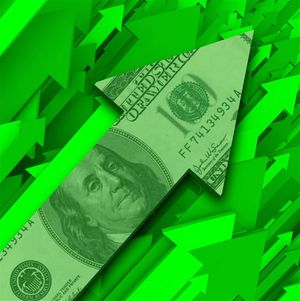
Commercial real estate lender Ladder Capital (NYSE: LADR) fell short of the market’s revenue expectations in Q1 CY2025, with sales falling 18.9% year on year to $51.28 million. Its non-GAAP profit of $0.20 per share was 8.3% below analysts’ consensus estimates.
Is now the time to buy LADR? Find out in our full research report (it’s free).
Ladder Capital (LADR) Q1 CY2025 Highlights:
- Revenue: $51.28 million vs analyst estimates of $55.21 million (18.9% year-on-year decline, 7.1% miss)
- Adjusted EPS: $0.20 vs analyst expectations of $0.22 (8.3% miss)
- Market Capitalization: $1.38 billion
StockStory’s Take
Ladder Capital’s first quarter performance reflected the aftereffects of elevated loan payoffs in 2024, which led to a period of muted reinvestment activity and impacted revenue generation. Management pointed to the deployment of over $800 million into new loans and AAA securities as signs that reinvestment momentum is building. President Pamela McCormack noted, “Getting paid back is the most important part of the mortgage business and we're excited to redeploy the liquidity generated from loan payoffs into new loans at lower reset basis that better reflects current market conditions.” The company also highlighted its focus on maintaining a strong balance sheet and credit ratings, while managing non-accrual loans and reserving for potential losses.
Looking forward, Ladder Capital’s outlook is shaped by expectations of continued market volatility, rising interest rates, and strategic capital deployment. Management sees opportunities to increase loan originations, especially in multifamily and industrial sectors, as well as to participate in conduit securitizations if the yield curve steepens. CEO Brian Harris stated, “We expect to add similar assets in the quarters ahead with a preference for higher yielding loans versus securities,” while emphasizing the company’s flexibility to pivot based on market conditions and the potential for Federal Reserve rate cuts to influence deal flow.
Key Insights from Management’s Remarks
Management attributed the quarter’s muted earnings to the lag between significant 2024 loan payoffs and the ramp-up of new lending and securities investments. They emphasized liquidity, credit ratings, and adapting portfolio mix as central to ongoing strategy.
- Loan portfolio transition: The company shifted from a period of high loan payoffs in 2024 to active reinvestment in Q1, originating $329 million of new loans and acquiring $521 million in AAA securities. Management emphasized that building up the loan pipeline is a key focus for future quarters.
- Commercial real estate sector dynamics: CEO Brian Harris described a market with “volatile conditions” and borrowers seeking quick closings, leading to attractive lending spreads, particularly in multifamily and industrial properties. These trends allowed Ladder to be selective in new originations and benefit from liquidity premiums.
- Liquidity and leverage management: Ladder prioritized maintaining $1.3 billion in liquidity, with 83% of assets unencumbered and a conservative leverage ratio (gross leverage at 1.83x). The company’s shift toward unsecured debt, including upsizing its revolving credit facility, has also been central to its funding strategy.
- Non-accrual loans and risk reserves: Two additional loans were placed on non-accrual in the quarter, bringing the balance to 2.6% of assets. However, management did not record impairments and maintained a $52 million CECL reserve, expressing confidence in coverage for potential losses.
- Securities and real estate segment update: The securities portfolio, now totaling $1.5 billion and predominantly AAA rated, is unlevered to preserve flexibility. The real estate segment generated stable net operating income and saw limited asset sales, with management open to opportunistic transactions without an active disposition plan.
Drivers of Future Performance
Management expects future performance to be driven by increased loan origination, ongoing portfolio rebalancing, and the impact of interest rate movements on both asset yields and funding costs.
- Loan origination ramp-up: Management anticipates exceeding Q1’s origination pace in subsequent quarters, focusing on multifamily and industrial loans as market fundamentals improve and more acquisition opportunities emerge. They expect the proportion of these asset types to remain high in the near term.
- Portfolio rebalancing and market flexibility: Ladder plans to gradually migrate capital from AAA securities to higher-yielding loans, while retaining the ability to add securities during periods of market volatility. This dynamic allocation is aimed at optimizing returns and managing risk as economic conditions evolve.
- Interest rate and yield curve impacts: The expectation of a steeper yield curve—with shorter-term rates falling and longer-term rates rising—could create opportunities in conduit securitizations and net lease assets. Management cautioned, however, that ongoing macroeconomic uncertainty and potential for recession remain headwinds for commercial real estate demand.
Catalysts in Upcoming Quarters
Looking ahead, the StockStory team will be monitoring (1) the pace and composition of new loan originations, especially within multifamily and industrial segments, (2) further shifts in portfolio allocation between loans, securities, and real estate assets as Ladder redeploys liquidity, and (3) any interest rate or yield curve changes that could unlock new opportunities in conduit securitizations and net lease investments. Updates on credit ratings and non-accrual trends will also be crucial to track.
Ladder Capital currently trades at $10.76, in line with $10.66 just before the earnings. Is there an opportunity in the stock?Find out in our full research report (it’s free).
Now Could Be The Perfect Time To Invest In These Stocks
Donald Trump’s victory in the 2024 U.S. Presidential Election sent major indices to all-time highs, but stocks have retraced as investors debate the health of the economy and the potential impact of tariffs.
While this leaves much uncertainty around 2025, a few companies are poised for long-term gains regardless of the political or macroeconomic climate, like our Top 5 Growth Stocks for this month. This is a curated list of our High Quality stocks that have generated a market-beating return of 183% over the last five years (as of March 31st 2025).
Stocks that made our list in 2020 include now familiar names such as Nvidia (+1,545% between March 2020 and March 2025) as well as under-the-radar businesses like the once-micro-cap company Tecnoglass (+1,754% five-year return). Find your next big winner with StockStory today.







